Crested geckos eat different things and have different eating habits when they’re kept as pets compared to when they’re in the wild.
If you’re new to owning a crested gecko or considering getting one, it’s important to understand what they eat.
In this article, I’ll explain what crested geckos eat and how to feed them the right way.
- In the wild, crested geckos munch on insects, fruits, and flower nectar.
- When you keep them as pets, you can give them a mix of live insects, special crested gecko food, and fruit.
- Some common insects for crested geckos are crickets, grasshoppers, mealworms, waxworms, silkworms, grubs, roaches, ants, and flies.
- For fruits, you can offer them mangoes, watermelons, bananas, figs, grapes, and strawberries.
What Do Crested Geckos Eat In The Wild?
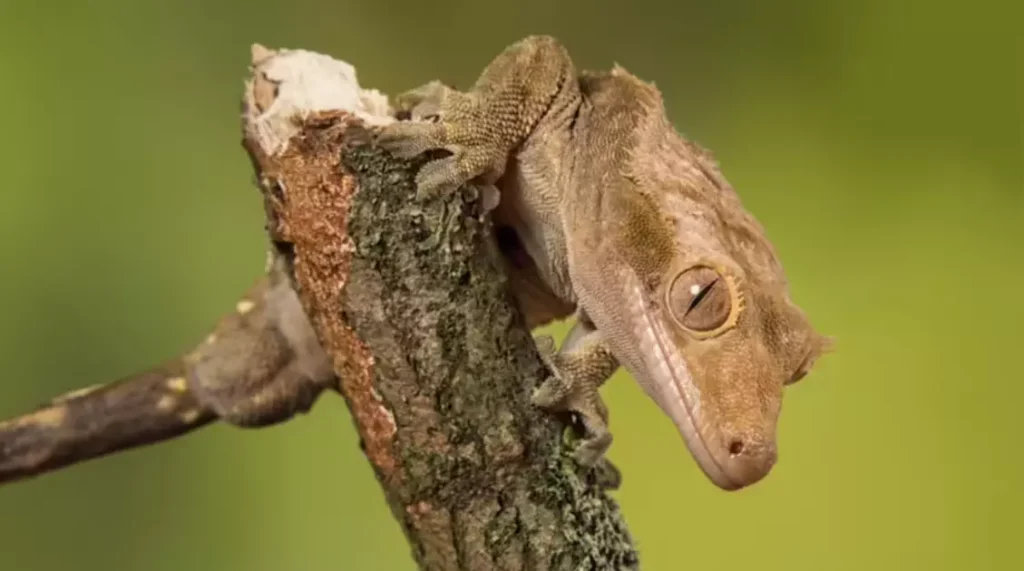
Back in 2007, a study was carried out on specifically wild Crested Geckos, and researchers observed what they usually ate in their normal environments and if they were Endangered.
They found that wild crested geckos mostly eat:
- 50% insect protein, like crickets, roaches, moths, beetles, spiders, and worms.
- 20% fruits, such as figs, bananas, mangoes, papayas, guavas, and berries.
- 10% pollen and seeds from flowers, grasses, and fruits.
- 20% other animals, like small mammals, lizards, frogs, birds, and even their own young.
So, crested geckos can eat a lot of different things.
They use their sticky tongues to slurp up fruit juices, nectar, pollen, and seeds from plant surfaces. For insects and vertebrates, they put their sharp teeth to good use by biting and chewing their prey.
Unlike us, they don’t have a set mealtime schedule.
Instead, their food intake depends on what’s available, the time of year, the weather, and how active they are.
Read More: My Crested Gecko Is Comfortable With Me, But I Never Handle Him More Than 20 Minutes
What Do Crested Geckos Eat In Captivity?
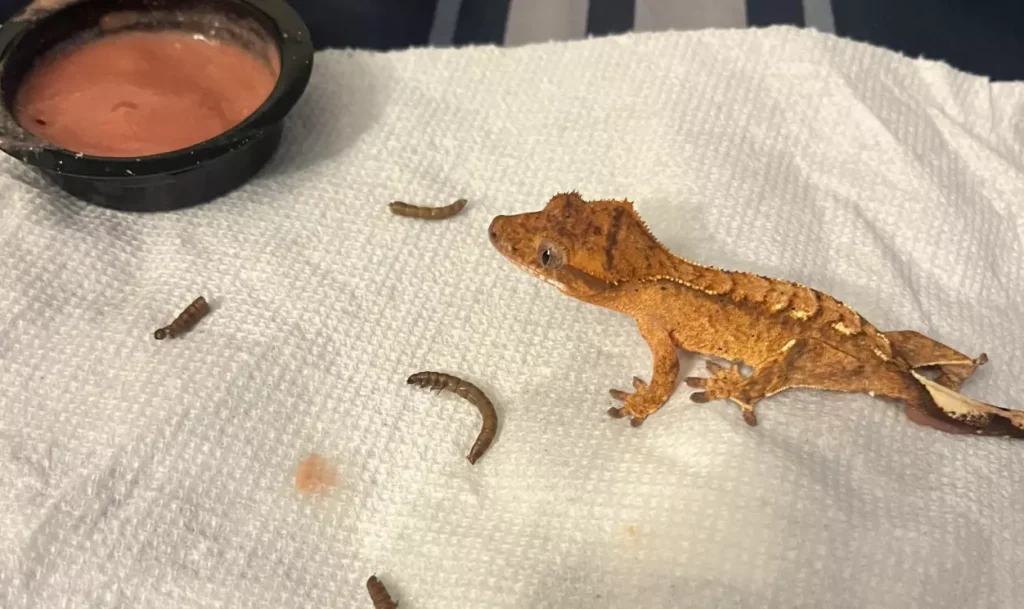
Unlike in the wild, crested geckos need special food when they live with us.
They can’t just find their own meals, so we need to give them a good mix of food that has all the things they need to stay healthy.
The main things in a pet crested gecko’s diet are:
- Ready-made gecko food (CGD)
- Bugs that are alive.
- Fruits and extra stuff.
Each of these things has good parts and not-so-good parts. You have to make sure you give them the right amounts at the right times to keep their diet balanced.
Let’s take a closer look at each of them.
1) Ready-made Gecko Food (CGD)
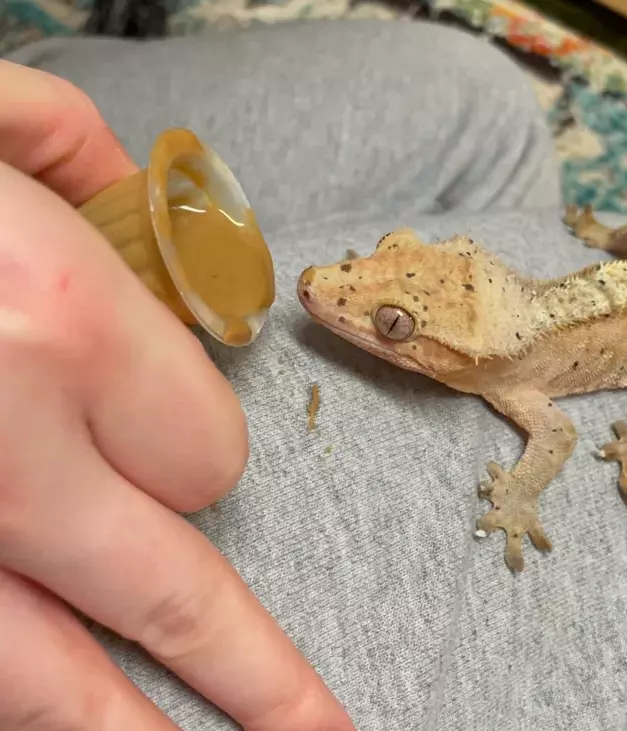
Ready-made gecko food, often called CGD, is the easiest and safest way to feed your crested gecko.
These are made to be like what crested geckos eat in the wild, so they have the right stuff in them and are good quality. They’re also simple to prepare and keep for a long time without going bad.
But, there are a lot of brands of CGD out there. Some of the popular ones are Repashy, Pangea, and Arcadia.
Look at this table:
| Good Things | Not-so-Good Things |
|---|---|
| It has everything crested geckos need to stay healthy, all-in-one food. | Some geckos might not find it exciting enough, especially if they’re used to live insects or fruits. |
| It’s a safe choice that helps avoid problems like missing nutrients, sickness, or bugs that might come with live insects or fruits. | It might not be easy to find or affordable for everyone, especially in places where it’s not common. |
| You can keep track of how much your gecko eats, and it’s easy to use because it’s the same every time. | It might not be right for geckos with special problems, like allergies or sickness. |
Note: Repashy is one of the oldest and most trusted brands for CGD. They have different flavors and sizes to choose from, like Classic Crested Gecko Diet, Grubs N Fruit Gecko Diet, Banana Cream Pie Gecko Diet, and more. If you are unsure, just go with them.
2) Live Insects
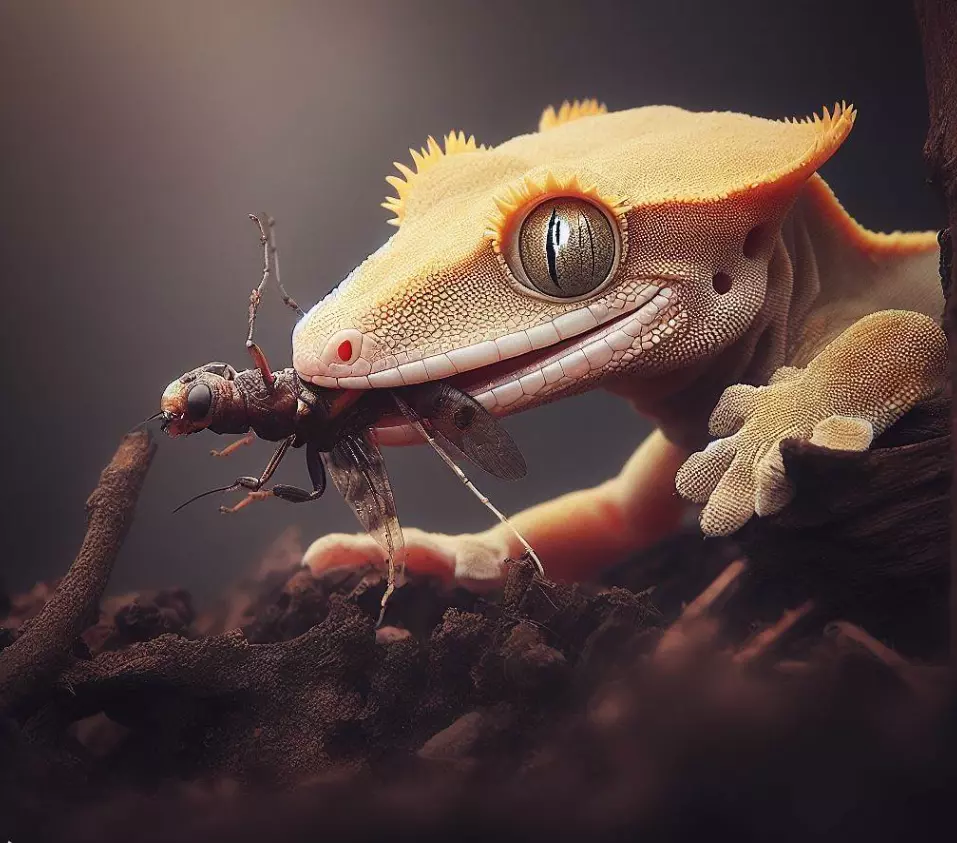
Live insects are another important part of their diet because they give your gecko protein, fat, and keep them active.
How often you offer live insects depends on how old and big your gecko is!
Young geckos need more insects because they’re still growing and need more energy. Older geckos need fewer insects to prevent them from getting overweight and having health issues.
The best insects for crested geckos are crickets, roaches, dubia roaches, mealworms, superworms, waxworms, hornworms and silkworms.
Most importantly, never feed insects that are too big, have hard shells, or are toxic, like fireflies, beetles, centipedes, and such. Also, don’t give them wild-caught insects because they might have bad stuff like parasites or pesticides.
Before feeding, dust the insects with calcium and vitamin stuff before serving them to your gecko to prevent problems like weak bones.
Tip: You can also offer some fresh fruits like bananas, strawberries, blueberries, raspberries, kiwis, peaches or apricots once or twice a week as a treat or a supplement to CGD and insects.
Just make sure not to overfeed them.
F.A.Q.s
Q: Can I feed my crested gecko baby food?
No, don’t feed your crested gecko baby food.
Only stick to a specialized crested gecko diet and occasional insect treats for a healthier diet.
Q: Is it safe to feed crested geckos live insects?
Yes, it’s safe to feed crested geckos live insects like crickets and roaches. Insects are a natural part of their diet and provide essential protein.
Q: Do crested geckos need a water bowl?
Crested geckos usually get their hydration from their food and the environment.
While a water bowl isn’t necessary, it’s a good idea to provide a shallow dish with clean water to maintain humidity levels.

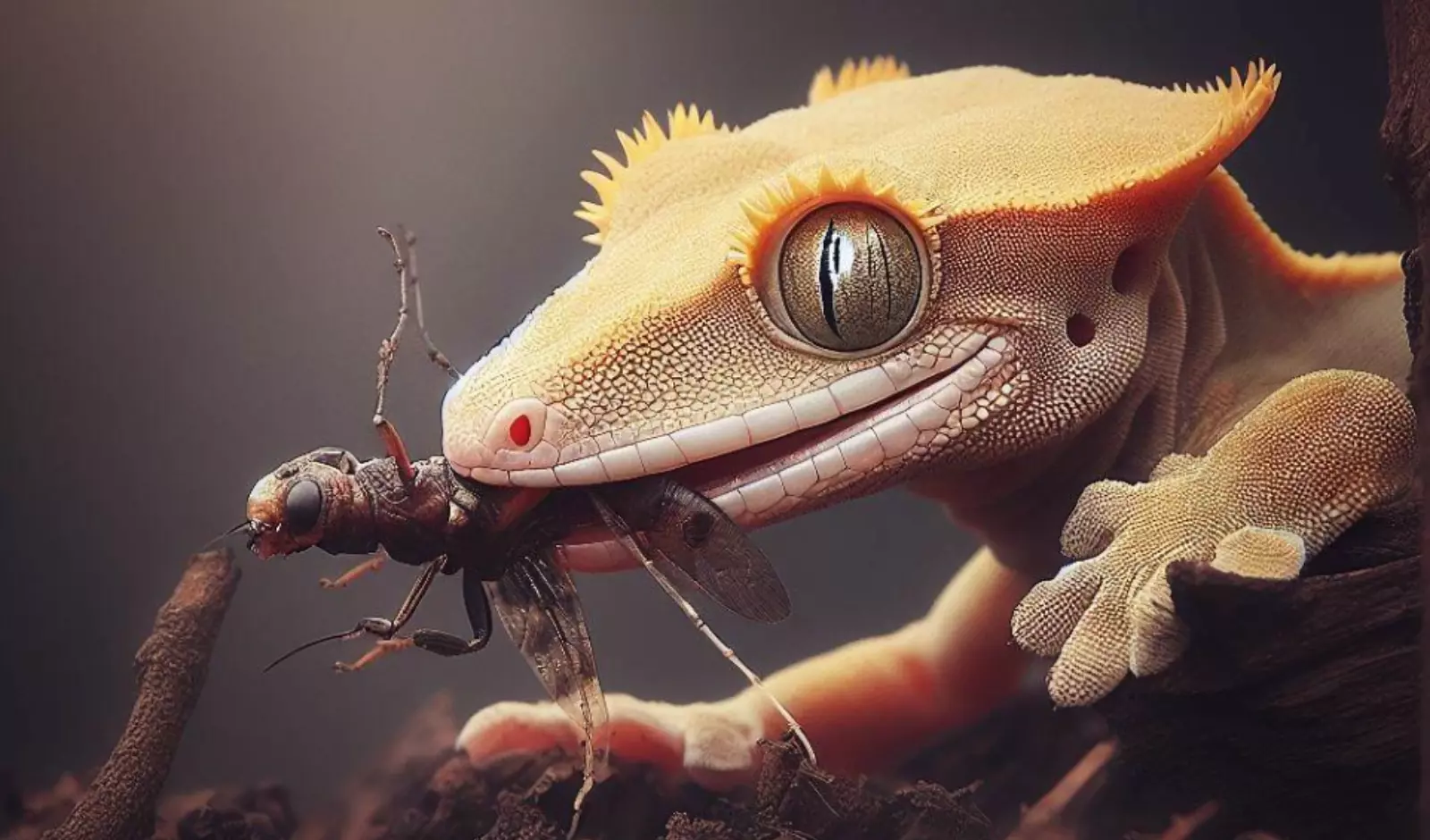
[…] However, there’s some debate among reptile owners about whether to give young crested geckos live insects. […]
[…] I used to give her mostly crickets, which (you know) are high in protein and fat, but low in calcium and vitamins. […]
[…] Crested geckos eat various foods like bugs, fruits, and ready-made diets. […]
[…] geckos get enough vitamin D3 from their food and UVB light can be harmful to their eyes and skin if used […]
[…] that are fed more insects than fruits or commercial diets may also poop more often, as insects are harder to digest and produce more […]
[…] Crested geckos eat a mix of plants and small animals. […]
[…] if you feed insects or fruits, their feces may have different colors depending on the type and color of the […]
[…] geckos, in their natural homes, eat a mix of bugs, fruits, and nectar. They’re flexible eaters, which means they can get lots of different nutrients from their […]
[…] of the time, I give him insects, mealworms, and the occasional cricket when they’re available, twice a week. On other days, he enjoys […]